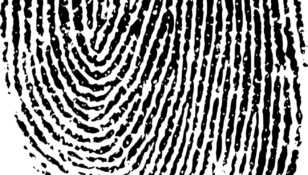Film Speed: A Comprehensive Guide for Photography Enthusiasts

Introduction to Film Speed
Film speed, also known as ISO, is a crucial element in photography that determines the sensitivity of the film to light. It plays a vital role in capturing well-exposed images and achieving the desired results. Understanding film speed is essential for photographers, whether they are using traditional film cameras or digital cameras with film simulations.
Here, we delve into the nuances of film speed, providing valuable insights for those intrigued by the subject. From its historical evolution to practical considerations, we cover all aspects to equip you with a comprehensive understanding of this often overlooked yet critical component of photography.
The Evolution of Film Speed

The development of film speed can be traced back to the early days of photography when photographers used plates coated with light-sensitive chemicals. It wasn’t until 1934 that the International Organization for Standardization (ISO) established a standard scale for measuring film speed, bringing uniformity to the industry. Initially, this scale measured the film’s sensitivity to light using the Weston exposure meter, ranging from 1 to 16.
Over time, technological advancements led to the refinement of film speed measurement, resulting in the establishment of the DIN scale in the 1950s. This system provided a more precise measurement and expanded the range of film speeds. However, it was eventually superseded by the ASA scale, which is now commonly used worldwide.
The ASA scale underwent significant modifications in 1974, leading to the birth of the ISO scale that remains in use today. This scale introduced standardized film speeds, simplifying the process for photographers and ensuring compatibility across different brands and equipment.
Understanding Film Speed
Film speed is indicated by a numerical value on the packaging or the camera setting, such as ISO 100 or ISO 400. A lower ISO indicates a lower film speed, which requires more light to expose the image properly. In contrast, a higher ISO denotes a higher film speed, allowing for images to be captured in low-light conditions.
One of the primary considerations when choosing film speed is the lighting conditions in which you’ll be photographing. For bright environments, such as outdoors in daylight, a lower ISO is recommended to capture high-quality images with minimal grain. On the other hand, low-light settings or indoor photography typically require higher ISO values to compensate for the lack of available light.
It’s important to note that higher ISO values may introduce noise or grain in the image, which can compromise the overall quality. Modern digital cameras have made significant advancements in reducing the impact of high ISO noise, but this factor should still be carefully considered when selecting the appropriate film speed.
Practical Tips for Choosing Film Speed
When deciding on the right film speed, several factors need to be taken into account. Here are some practical tips to guide your selection:
Lighting Conditions: Assess the lighting conditions in which you’ll be shooting. Determine whether it’s predominantly bright or low-light to inform your choice.
Subject Movement: Consider whether your subject is static or in motion. Higher film speeds are better equipped to freeze action, making them ideal for sports or wildlife photography.
Desired Grain: Determine the level of grain you prefer in your images. Lower film speeds produce finer grain, providing a smoother appearance, while higher speeds can add a gritty or vintage aesthetic.
Availability of Light: If you’re relying solely on natural light and have limited control over the lighting conditions, it’s advisable to have a selection of film speeds on hand to adapt to different situations.
By considering these factors, you can make an informed decision regarding the film speed that aligns with your creative vision and shooting conditions.
In conclusion, film speed is a critical aspect of photography that significantly impacts the outcome of your images. By understanding its historical evolution, technical aspects, and practical considerations, photographers can harness its power to unleash their creativity. Whether you’re an enthusiast exploring the world of film cameras or a digital photographer seeking to optimize film simulations, mastering film speed will undoubtedly enhance your photographic skills. So, grab your camera and explore the possibilities offered by various film speeds to capture captivating moments that stand the test of time.

















